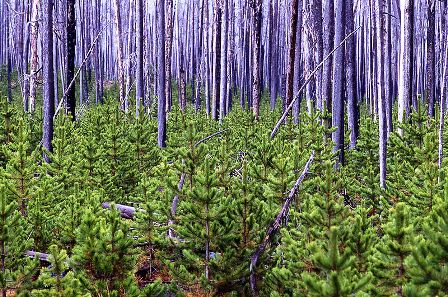- Series:Plants, Transcript English
Job 12:7-9
“But ask now the beasts, and they shall teach thee; and the fowls of the air, and they shall tell thee: Or speak to the earth, and it shall teach thee: and the fishes of the sea shall declare unto thee. Who knoweth not in all these that the hand of the LORD hath wrought this?”
The 1988 fires in Yellowstone National Park were the worst ever recorded there. But researchers who studied the fires and their effects now say that it is normal for such huge fires to occur every couple of centuries in Yellowstone. And while fires burned about 20 percent of the park, less than 1 percent was so devastated by  fire that the soil was made lifeless. Further, periodic fires speed the release of nutrients to the soil that are trapped in dead wood. Many plants actually depend on fires to shock them out of an unproductive dormant period.
fire that the soil was made lifeless. Further, periodic fires speed the release of nutrients to the soil that are trapped in dead wood. Many plants actually depend on fires to shock them out of an unproductive dormant period.
The lodgepole pine makes up 77 percent of Yellowstone’s forests and actually has its own fire insurance. The pine produces two kinds of seed bearing cones. One cone releases its seeds normally. But the other cone is coated with a strong resin that keeps the cone sealed shut. These cones may remain sealed shut on the tree for decades until a fire burns off the resin and causes the core to release its seeds. After a fire, there are up to 20 seeds for every square foot of forest lying on the ground, ready to sprout in the newly enriched soil!
The wisdom and love of the Creator is seen once again in providing for the lodgepole pine tree with an amazing fire insurance system.
Prayer:
Dear Lord Jesus Christ, King of creation, help me to join, with my human voice, all of Your creatures who bear witness to Your wisdom and praise You with the voices You have given us. Amen.
Notes:
Richard Monastersky. “After the Flames.” Science News, vol. 134, p. 330. Photo: 10 years after the 1988 Yellowstone fires, Lodgepole pine forests reestablish themselves amongst still standing dead trees.
